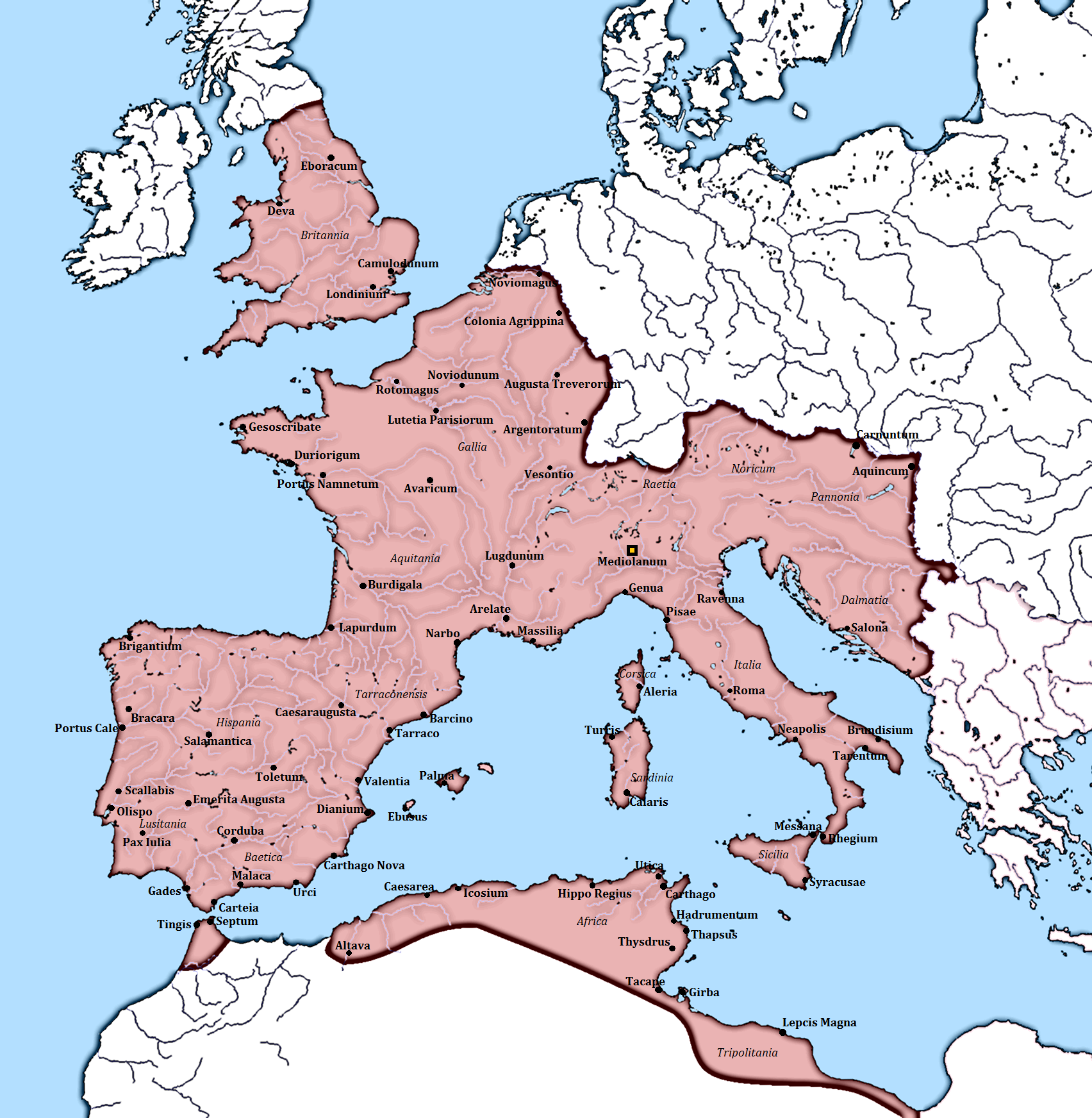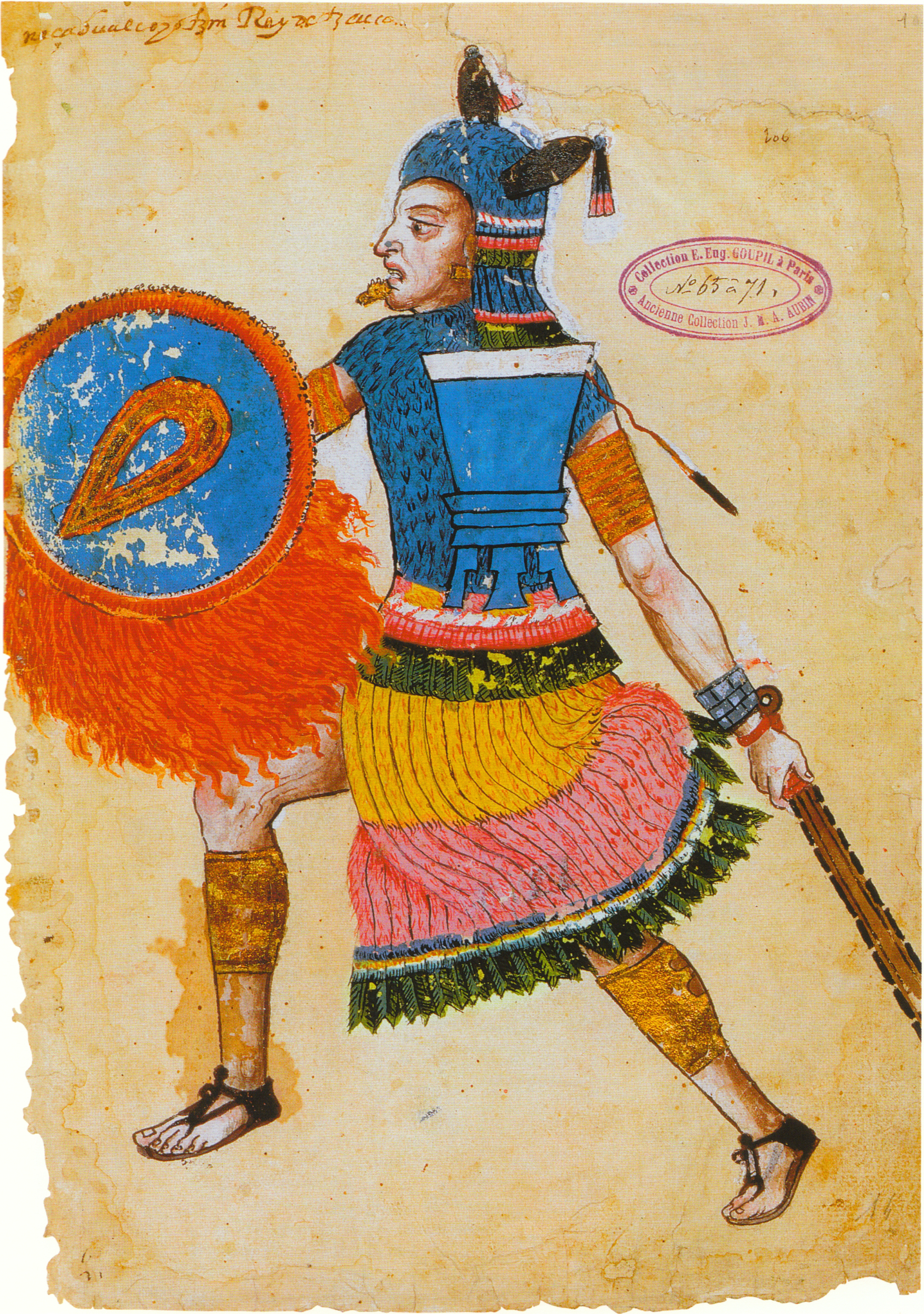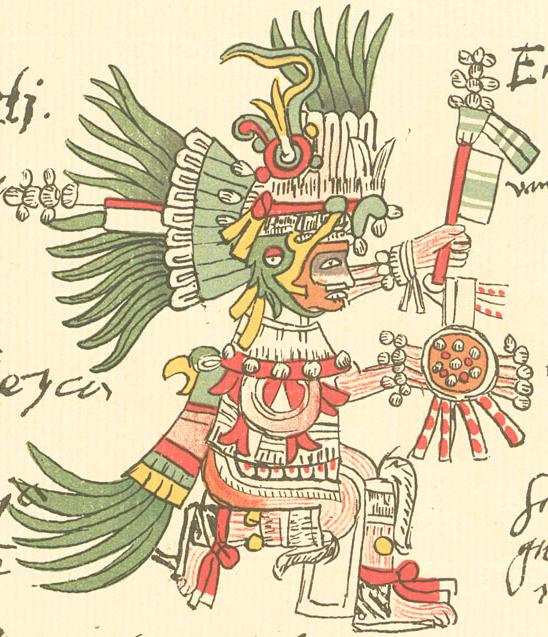|
Aztec Society
Aztec society was a highly complex and stratified society that developed among the Aztecs of central Mexico in the centuries prior to the Spanish conquest of the Aztec Empire, and which was built on the cultural foundations of the larger region of Mesoamerica. Politically, the society was organized into independent city-states, called altepetls, composed of smaller divisions ( calpulli), which were again usually composed of one or more extended kinship groups. Socially, the society depended on a rather strict division between nobles and free commoners, both of which were themselves divided into elaborate hierarchies of social status, responsibilities, and power. Economically the society was dependent on agriculture, and also to a large extent on warfare. Other economically important factors were commerce, long-distance and local, and a high degree of trade specialization. Overview Aztec society can trace its roots to Mesoamerican Origins. Their language, lifestyle, and technolo ... [...More Info...] [...Related Items...] OR: [Wikipedia] [Google] [Baidu] |
Complex Society
A complex society is characterized by the following modern features: * Organizational society wherein its economy is structured according to specialization and a Division of labour, division of labor. These economic features spawn a bureaucratic class and often lead to inequality. Leading to the rise of a Ruling class, ruling elite. * Archaeologically, features such as big architectural projects such as Temple, temples, Palace, palaces, public works etc and prescribed Funeral, burial rites. * Large scale agricultural development, leads to surplus food, which allows members of the society the time for developing and practicing specialized skill sets, other than farming. * Organized political structure and Institution, state institutions. The term is mostly used as shorthand to indicate a society with intricate political organization and using technology to expand economic production. Emergence of complex societies Before human beings developed complex societies, they lived in primi ... [...More Info...] [...Related Items...] OR: [Wikipedia] [Google] [Baidu] |
Huastec Civilization
The Huastec civilization (sometimes spelled Huaxtec or Wastek) was a pre-Columbian civilization of Mesoamerica, occupying a territory on the Gulf coast of Mexico that included the northern portion of Veracruz Veracruz, formally Veracruz de Ignacio de la Llave, officially the Free and Sovereign State of Veracruz de Ignacio de la Llave, is one of the 31 states which, along with Mexico City, comprise the 32 Political divisions of Mexico, Federal Entit ... state, and neighbouring regions of the states of Hidalgo (state), Hidalgo, Querétaro, San Luis Potosí, and Tamaulipas.Diehl 2000, pp. 184–185. The Huastec people were an early offshoot of the Maya peoples that migrated northwards. Surviving remains from the Huastec civilization include several large archaeological sites, a well-preserved temple, and a large amount of stone sculpture. By the Mesoamerican chronology#Postclassic period, Late Postclassic (c. AD 1200–1521), the Huastecs had developed Metallurgy in pre-Columb ... [...More Info...] [...Related Items...] OR: [Wikipedia] [Google] [Baidu] |
Texcoco (altepetl)
Tetzcoco (Classical Nahuatl: ''Tetzco(h)co'' , Otomi: ) was a major Acolhua altepetl (city-state) in the central Mexican plateau region of Mesoamerica during the Late Postclassic period of pre-Columbian Mesoamerican chronology. It was situated on the eastern bank of Lake Texcoco in the Valley of Mexico, to the northeast of the Aztec capital, Tenochtitlan. The site of pre-Columbian Tetzcoco is now subsumed by the modern Mexican ''municipio'' of Texcoco and its major settlement, the city formally known as Texcoco de Mora. It also lies within the greater metropolitan area of Mexico City. Pre-Columbian Tetzcoco is most noted for its membership in the Aztec Triple Alliance. At the time of the Spanish conquest of the Aztec Empire, it was one of the largest and most prestigious cities in central Mexico, second only to the Aztec capital, Tenochtitlan. A survey of Mesoamerican cities estimated that pre-conquest Tetzcoco had a population of 24,000+ and occupied an area of 450 h ... [...More Info...] [...Related Items...] OR: [Wikipedia] [Google] [Baidu] |
Otompan
Otompan (Nahuatl for "place of Otomis") or Otumba (the Spanish version of the name) was a pre-Columbian '' altepetl'' or city-state in the upper Teotihuacan Valley (now in Mexico). According to histories written in the colonial period (16th and 17th centuries), Otompan was created around 1395 when Techotlalatzin, ruler of Texcoco, settled Otomi refugees there who were fleeing the conquest of Xaltocan by the Tepanecs under Tezozomoc. References * * See also * Otumba de Gómez Farías Otumba may refer to: * Otumba, State of Mexico, a municipality in the State of Mexico, Mexico * Otumba de Gómez Farías, a town and the municipal seat of Otumba municipality, State of Mexico * Otompan, a pre-Columbian ''altepetl'' * Battle of Otumb ... Lost ancient cities and towns Altepetl Aztec sites Former populated places in Mexico Otomi sites 1390s establishments in North America {{mesoamerica-stub ... [...More Info...] [...Related Items...] OR: [Wikipedia] [Google] [Baidu] |
Trade Guild
A guild ( ) is an association of artisans and merchants who oversee the practice of their craft/trade in a particular territory. The earliest types of guild formed as organizations of tradespeople belonging to a professional association. They sometimes depended on grants of letters patent from a monarch or other ruler to enforce the flow of trade to their self-employed members, and to retain ownership of tools and the supply of materials, but most were regulated by the local government. Guild members found guilty of cheating the public would be fined or banned from the guild. A lasting legacy of traditional guilds are the guildhalls constructed and used as guild meeting-places. Typically the key "privilege" was that only guild members were allowed to sell their goods or practice their skill within the city. There might be controls on minimum or maximum prices, hours of trading, numbers of apprentices, and many other things. Critics argued that these rules reduced free competition ... [...More Info...] [...Related Items...] OR: [Wikipedia] [Google] [Baidu] |
Pochteca
''Pochteca'' (singular ''pochtecatl'') were professional, long-distance traveling merchants in the Aztec Empire. The trade or commerce was referred to as ''pochtecayotl''. Within the empire, the ''pochteca'' performed three primary duties: market management, international trade, and acting as market intermediaries domestically. They were a small but important class as they not only facilitated commerce, but also communicated vital information across the empire and beyond its borders, and were often employed as spies due to their extensive travel and knowledge of the empire. There is one famous incident where a tribe declined rice from another tribe, beginning a long and bloody clan war. The ''pochteca'' are the subject of Book 9 of the '' Florentine Codex'' (1576), compiled by Bernardino de Sahagún. Status in Aztec society ''Pochteca'' occupied a high status in Aztec society, below the noble class. They were responsible for providing the materials that the Aztec nobility used ... [...More Info...] [...Related Items...] OR: [Wikipedia] [Google] [Baidu] |
Macehualtin
The mācēhualtin ( IPA: , singular ''mācēhualli'' ) were the commoner social class in Aztec society. The Aztec social class of the ''mācēhualtin'' were rural farmers, forming the majority of the commoners in the Aztec Empire. The ''mācēhualtin'' worked lands that belonged to the social unit of the calpolli called chinampas, with each family maintaining rights to the land so long as it did not lie fallow for more than two years. Within these lands, the rural ''mācēhualtin'' constructed small dams and terraces to increase their agricultural yield. Crops common to Mexican agriculture were grown on these plots, including maize, beans and squash. These projects were probably organized by the local communities and were not state led. From their produce and productivity, the corn were required to pay tribute to the Aztec nobility. During the reign of Moctezuma II (1502–1520), they were banned from serving in the royal palaces, as this monarch widened the divide between ' ... [...More Info...] [...Related Items...] OR: [Wikipedia] [Google] [Baidu] |
Pipiltin
The Pipiltin (sg. ''pilli'') were the noble social class in the Mexica Empire. They are the lowest nobles in the civilization's social structure and above the commoners who achieved noble status due to an outstanding deed in war. These people were members of the hereditary nobility and occupied positions in the government as ambassadors and ministers, the army and the priesthood. Pipiltin often headed their own noble houses, called tecalli, with their own lands and dependent labourers. The subclasses within the ''Pipiltin'' were: tlahtohcapilli (a tlahtoani's son), tecpilli or teucpilli (a teuctli's son), tlazohpilli (son of a legitimate wife), and calpanpilli (son of a concubine). Children of the ''Pipiltin'' were given extensive education in preparation for the role they would play in their adult life. They were sent to the '' calmecac'', which was the center for higher learning, to study the ancient wisdom as well as "elegant forms of speech, ancient hymns, poems and histo ... [...More Info...] [...Related Items...] OR: [Wikipedia] [Google] [Baidu] |
Tlaxcala (Nahua State)
Tlaxcala ( , 'place of maize tortillas') was a pre-Columbian city and state in central Mexico. During the Spanish conquest of the Aztec Empire, the Tlaxcaltecs allied with the Spanish Empire against their hated enemies, the Aztecs, supplying a large contingent for and sometimes most of the Spanish-led army that eventually destroyed the Aztec Empire. Tlaxcala was completely surrounded by Aztec lands, leading to the intermittent so called " flower war" between the Aztecs and the Tlaxcalans, fighting for their independence, as the Aztecs wanted to absorb them into the empire. History The Tlaxcalans arrived in Central Mexico during the Late Postclassic. They first settled near Texcoco in the valley of Mexico, between the settlement of Cohuatlinchan and the shore of Lake Texcoco. After some years the Tlaxcallans were driven out of the valley of Mexico and moved to the east, splitting into three groups along the way. While one group continued north towards the modern state of ... [...More Info...] [...Related Items...] OR: [Wikipedia] [Google] [Baidu] |
Tlaxcaltec
The Tlaxcallans, or Tlaxcaltec, are an indigenous Nahua people who originate from Tlaxcala, Mexico. The Confederacy of Tlaxcala was instrumental in overthrowing the Aztec Empire in 1521, alongside conquistadors from the Kingdom of Spain. The Tlaxcallans remained allies of the Spanish for 300 years until the Independence of Mexico in 1821. Pre-Colonial history The Tlaxcaltec were a Nahua group, one of the 7 tribes which migrated from their original homeland in the north alongside the Mexica and 5 other tribes. After settling in what is now called Tlaxcala they formed a conglomeration of three distinct ethnic groups who spoke Nahuatl, Otomi and Pinome that comprised the four city-states (''Altepetl'') of ''Tlaxcallān'' or Tlaxcala. Each of the four cities supposedly had equal say in this confederation, but eventually, the Nahuatl speakers became the dominant ethnic group. By the time of European contact, the city of Tizatlan was effectively controlling Tlaxcala. Despite ea ... [...More Info...] [...Related Items...] OR: [Wikipedia] [Google] [Baidu] |
Mexica
The Mexica (Nahuatl: ; singular ) are a Nahuatl-speaking people of the Valley of Mexico who were the rulers of the Triple Alliance, more commonly referred to as the Aztec Empire. The Mexica established Tenochtitlan, a settlement on an island in Lake Texcoco, in 1325. A dissident group in Tenochtitlan separated and founded the settlement of Tlatelolco with its own dynastic lineage. In 1521, their empire was overthrown by an alliance of Spanish conquistadors and rival indigenous nations, most prominently the Tlaxcaltecs. The Mexica were subjugated under the Spanish Empire for 300 years, until the Mexican War of Independence overthrew Spanish dominion in 1821. Today, descendants of the Mexica and other Aztecs are among the Nahua people of Mexico. Since 1810, the broader term ''Aztec'' is often used to describe the Mexica. When a distinction is made, Mexica are one (dominant) group within the Aztecs. Names The ''Mexica'' are eponymous of the place name Mexico (''Mēxihco ... [...More Info...] [...Related Items...] OR: [Wikipedia] [Google] [Baidu] |




